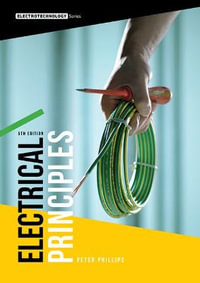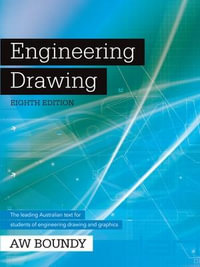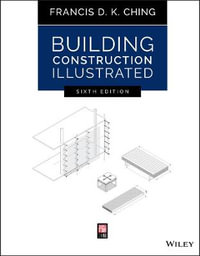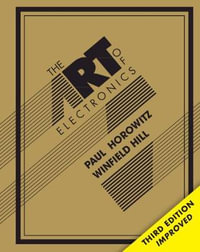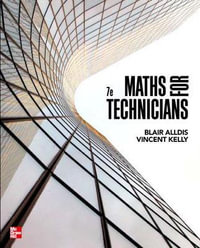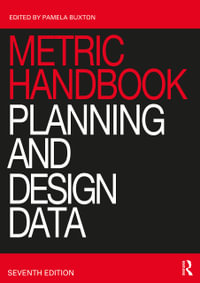
Engineering Your Future
4th Edition - An Australasian Guide
By: David Dowling, Roger Hadgraft, Anna Carew, Tim McCarthy, Doug Hargreaves
Paperback | 19 August 2019 | Edition Number 4
At a Glance
632 Pages
Revised
27.5 x 21 x 3
New Edition
Paperback
RRP $164.95
$141.25
14%OFF
or 4 interest-free payments of $35.31 with
orWhen will this arrive by?
This full-coloured print with interactive e-text resource has a variety of digital media embedded at the point of learning such as videos and knowledge-check questions to engage students and to help consolidate their learning.
About the authors ix
Preface xii
Part 1 Introduction to engineering 1
Chapter 1 What is engineering? 2
Introduction 3
1.1 What is the role of an engineer? 4
A historical perspective 4
A contemporary perspective 6
1.2 Engineering disciplines 7
Electrical, electronics and telecommunications engineering 9
Mechanical engineering 10
Aerospace and aviation engineering 11
Chemical engineering 12
Civil engineering 12
Environmental engineering 14
Materials engineering 15
Mining engineering 16
Other engineering disciplines 16
1.3 The core skills and attributes of an engineer 17
The Engineers Australia competency framework 18
The Engineering New Zealand framework 20
1.4 Engineering science 23
1.5 The impact of engineering on society and national identity 24
A historical perspective 25
A contemporary perspective 32
Engineering innovations 34
Limitations of engineering 34
1.6 Professionalism, certification and ethical practice in engineering 36
Summary 38
Key terms 38
Exercises 39
Project activity 40
References 40
Acknowledgements 42
Chapter 2 The engineering method 43
Introduction 44
2.1 The engineering method 45
Step 1. Exploring the problem 46
Step 2. Exploring alternative solutions 51
Step 3. Evaluating alternative solutions 53
Step 4. Engineering decision making 54
Step 5. Communicating your recommendation 55
The scientific method 55
2.2 Systems thinking 56
The system boundary 56
2.3 Project management 59
Defining the scope 59
Scheduling 60
Resources 61
Documentation — the design file 61
Time–accuracy trade-off 62
Agile project management 63
Risk management 63
Reporting and documentation 65
Improving practice 66
Life-long learning 67
The engineering method and project management 68
2.4 The life cycle of an engineering asset 68
Design 70
2.5 Critical thinking 73
Critical thinking in an engineering context 74
Moving from having an opinion to taking a position 79
Summary 80
Key terms 81
Exercises 81
Project activity 82
References 82
Acknowledgements 83
Part 2 Engineering in society 84
Chapter 3 Sustainable engineering 85
Introduction 86
3.1 What is ecologically sustainable development (ESD)? 88
Definitions of ESD 89
What is sustainable engineering? 92
Why sustainable engineering? 93
3.2 Strategies for practising sustainable engineering 95
Constraints of sustainable engineering practice 98
Triple bottom line analysis (TBLA) 100
3.3 Environmentally sustainable engineering 100
A global perspective 101
Measuring environmental impacts 103
Life cycle assessment (LCA) 106
3.4 Socially sustainable engineering 110
Promoting intergenerational and intragenerational equity 110
Maslow’s hierarchy of needs 112
Community communication and consultation 113
Multi-criteria decision analysis (MCDA) 114
Engagement techniques 116
3.5 Economically sustainable engineering 117
Costing 117
Economic theories 118
Least cost planning (LCP) 118
Summary 121
Key terms 122
Exercises 123
Project activity 124
References 124
Acknowledgements 126
Chapter 4 Professional responsibility and ethics 128
Introduction 129
4.1 Professional responsibility: standards and professional liability 130
4.2 Work health and safety (WHS) and personal liability 133
Product recall 137
4.3 Engineering ethics 138
The Engineering New Zealand Code of Ethical Conduct 140
The IEEE Code of Ethics 141
Interpreting and applying codes of ethics 142
4.4 Ethical theories 143
Morals and ethics 143
4.5 Common ethical dilemmas in engineering 147
Micro ethics 148
Balancing conflicting interests 151
4.6 Macro ethics 154
4.7 Culture and corruption 155
International business etiquette 156
Corruption and bribery 156
Summary 159
Key terms 160
Exercises 161
Project activity 162
References 162
Acknowledgements 163
Part 3 Professional skills 164
Chapter 5 Self-management 165
Introduction 166
5.1 Understanding self 168
Your personality and attitudes 168
Spatial ability 171
5.2 What motivates you? 172
Sources of inspiration 176
5.3 Developing your skills 178
Developing an inquiring mind 178
5.4 Self-management skills 181
Developing goals and strategies 181
Being responsible 181
Being professional 181
Managing your time effectively 182
5.5 Life-long learning 183
Knowledge frameworks 186
The program framework 187
Managing your learning 189
5.6 Reviewing your performance 196
Levels of reflection 199
Kolb’s Learning Cycle 199
Summary 201
Key terms 202
Exercises 202
Project activity 203
References 203
Acknowledgements 205
Chapter 6 Working with people 206
Introduction 207
6.1 Collaborating with others 208
6.2 Working in groups 214
Establishing a group or team 215
The fundamentals of an effective group 217
The life cycle of a team 220
Improving performance 221
Leadership 223
The benefits of working with others 224
6.3 Meetings 225
The purpose 225
The style 228
The timing 228
The length of the meeting 228
The participants 228
The procedures 228
Your contribution 229
Organising a meeting 229
The role of technology in meetings 232
The downside of working with others 232
6.4 Negotiation 235
The preparation process 235
Approaches to negotiation 236
Outcomes of the negotiation process 238
6.5 Dispute resolution 239
Conflict resolution 240
Summary 241
Key terms 242
Exercises 242
Project activity 243
References 243
Acknowledgements 244
Part 4 Communication 246
Chapter 7 Understanding communication 247
Introduction 248
7.1 What is communication? 249
Key communication skills for engineers 251
7.2 Communication theories and models 252
The communication process 253
A contemporary model 254
Developing a communication model for engineers 255
7.3 Communication contexts 259
Characteristics of communicators 260
Environments 264
Digital communication 266
7.4 Communication methods 270
Channels 270
Communication languages 270
Noise 272
7.5 Communication roles 275
The creator 275
The gatekeeper 278
The consumer 279
Summary 281
Key terms 282
Exercises 282
Project activity 282
References 283
Acknowledgements 284
Chapter 8 Communication skills 285
Introduction 286
8.1 Verbal communication skills 291
Listening 292
Telling 293
Discussing 293
Informal verbal communication 294
8.2 Formal verbal communication 296
Media releases, interviews and publicity 296
Presentations 297
Working to presentation time limits 298
The presentation contexts 299
Content and structure 300
Selecting and preparing media 301
Assembling and rehearsing the presentation 302
Is approval required? 303
Presenting through words and action 303
Answering questions 304
8.3 Written communication skills 304
Reading 304
Writing 305
Wikis 311
Web pages 311
8.4 Visual communication 312
Data 312
Summary 327
Key terms 327
Exercises 328
References 328
Acknowledgements 329
Part 5 Applying the engineering method 330
Chapter 9 Understanding the problem 331
Introduction 332
9.1 Data, information and knowledge 334
Data 334
Information 340
Knowledge 340
Differentiating between data, information and knowledge 341
9.2 Identifying information needs 343
Investigative questioning 343
Categories of information 345
Organising information needs 345
9.3 Locating and retrieving information 348
Typical sources of engineering information 348
Documents 349
Colleagues 351
Stakeholders 353
Geographic information systems 357
Library search tools 359
Internet search tools 360
Developing a search strategy 360
Recording data about information sources 364
9.4 Evaluating information and information sources 364
Evaluating information sources 364
Evaluating information 365
Refining information needs 366
9.5 Managing and using information 366
Integrating information 367
Publishing information 368
A literature review 368
An information management system 368
Controlling access to your information 371
9.6 Citing and referencing 373
Listing and citing print references 373
Listing and citing online references 375
Further information about referencing styles 376
Summary 377
Key terms 378
Exercises 378
Project activity 378
References 380
Acknowledgements 381
Chapter 10 Engineering design 382
Introduction 383
10.1 Design = problem solving 384
Key ideas in the design process 384
10.2 Systems thinking 387
Stakeholders 389
Socio–ecological thinking 392
Whole system design goals 393
Whole system design elements 396
10.3 Generating alternative solutions 404
Five Ws and an H 404
Research 405
Brainstorming 406
Lateral thinking, parallel thinking and the six thinking hats 407
Synectics 410
TRIZ 412
Transforming design through biomimetic thinking and design 414
Summary 417
Key terms 417
Exercises 418
Project activity 418
References 419
Acknowledgements 420
Chapter 11 Evaluating options 422
Introduction 423
11.1 Evaluating solutions — economics 423
Non-economic criteria 424
Qualitative approaches to project evaluation 424
Economic feasibility 425
Sensitivity analysis 431
A more detailed economic model 432
11.2 Technical feasibility 436
11.3 Mathematical modelling in design 438
Power output 439
Maximising energy production 440
Safety 442
Checking 443
Hierarchy of models 443
Summary 445
Key terms 445
Exercises 445
Project activity 446
References 446
Acknowledgements 447
Chapter 12 Engineering decision making 448
Introduction 449
12.1 Engineering decision making 449
Engineering decision support 450
12.2 Complexity 452
Static and dynamic problems 452
12.3 Team-based decision making 453
Effective team environment 455
Dominance and power 455
Diversity in teams 456
Making better decision makers 457
12.4 Reviewing key decision-making criteria 460
Uncertainty 460
Environment 460
Ethics 460
Safety 461
Review and improve — quality assurance 461
12.5 Decision support systems, tools and techniques 463
‘Pen and paper’ decision support tools 463
Computer-based DSS 465
Networked DSS relying on communications technology 467
Intelligent DSS (IDSS) 471
GIS-based DSS 472
Summary 475
Key terms 475
Exercises 476
Project activity 476
References 476
Acknowledgements 477
Chapter 13 Managing engineering projects 478
Introduction 479
13.1 Understanding project management 480
Key factors in project management 481
The Project Management Body of Knowledge (PMBOK) and project management standards 481
Project management tools 485
13.2 Planning the stages of an engineering project 488
Using a tool to plan the project stages 489
Planning the stages of the green-star building project 492
Human resources 500
Financial resources 502
13.3 Creating a risk-management plan 503
Dependency risks 504
Design risks 505
Construction risks and safety 505
Internal project risks 507
Long-term risks for the green-star building 508
13.4 Developing a knowledge management plan 508
Document storage, archiving and data mining 509
Sharing knowledge 509
Communities of practice 510
Student knowledge management 511
13.5 Quality management and its relationship to project management 511
Key quality management principles 512
Engineering quality management 513
Quality plans and engineering 514
Quality and the engineering student 515
Quality and student team projects 516
Summary 517
Key terms 517
Exercises 518
Project activity 519
References 519
Acknowledgements 520
Chapter 14 Communicating information 521
Introduction 522
14.1 Three communication contexts 523
The business context 524
The discipline context 524
The public context 525
14.2 Planning a communication 527
Using the PCR model to create effective communication 527
Developing a communication plan for an engineering project 528
Using the model 529
Approach 529
Communication methods, styles, formats and media 531
14.3 Writing in the engineering workplace 531
Practice notes 533
Business correspondence 534
Human resource documents 535
Financial documents 539
Project initiation documents 541
Risk management documents 547
14.4 Technical presentations 553
How can poor presentation be avoided? 553
14.5 Visual communication 555
Drawings, plans and sketches 556
Photography 557
Engineering models 557
Summary 566
Key terms 567
Exercises 567
Project activity 567
References 567
Acknowledgements 568
Part 6 Planning your career 569
Chapter 15 Your engineering future 570
Introduction 571
15.1 Engineering to meet future global challenges 572
Antibiotic resistance 572
Climate change adaptation 576
15.2 Engineering and globalisation 581
Employment in Australia 581
Globalisation 582
Development and post development 583
15.3 Futuristic engineering: emerging fields 584
Industrial biotechnology 585
Materials science 585
Phytomining 586
Biomimicry 587
Animatronics 588
15.4 An engineering career 589
Work to rule — or be inspired to work towards a fulfilling career 590
Management approaches 590
Different types of engineering organisations 591
Efficiency and respect in the workplace 591
Continuing professional development (CPD) 592
Career planning 593
Summary 595
Key terms 595
Exercises 596
Project activity 597
References 597
Acknowledgements 598
Index 600
ISBN: 9780730369165
ISBN-10: 0730369161
Published: 19th August 2019
Format: Paperback
Language: English
Number of Pages: 632
Audience: College, Tertiary and University
Publisher: John Wiley & Sons Australia
Country of Publication: AU
Edition Number: 4
Edition Type: Revised
Dimensions (cm): 27.5 x 21 x 3
Weight (kg): 1.28
Shipping
| Standard Shipping | Express Shipping | |
|---|---|---|
| Metro postcodes: | $9.99 | $14.95 |
| Regional postcodes: | $9.99 | $14.95 |
| Rural postcodes: | $9.99 | $14.95 |
How to return your order
At Booktopia, we offer hassle-free returns in accordance with our returns policy. If you wish to return an item, please get in touch with Booktopia Customer Care.
Additional postage charges may be applicable.
Defective items
If there is a problem with any of the items received for your order then the Booktopia Customer Care team is ready to assist you.
For more info please visit our Help Centre.
You Can Find This Book In

Electrical Principles (5th Edition) + Electrical Trade Practices Student Book (3rd Edition) - Value Pack
Multi-Copy Pack
RRP $219.95
$173.75
OFF
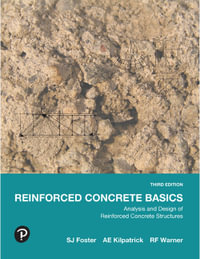
Reinforced Concrete Basics (Pearson Original Edition) 3ed
Analysis and Design of Reinforced Concrete Structures
Paperback
RRP $131.95
$107.25
OFF
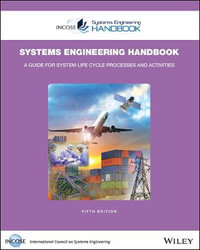
INCOSE Systems Engineering Handbook
5th Edition - A Guide for System Life Cycle Processes and Activities
Paperback
RRP $149.95
$92.50
OFF
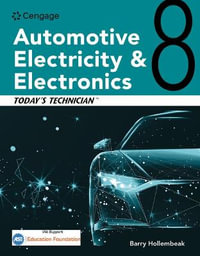
Today's Technician: Automotive Electricity and Electronics
8th Edition - Classroom and Shop Manual Pack
Spiral Ringed Book
RRP $174.95
$141.75
OFF
